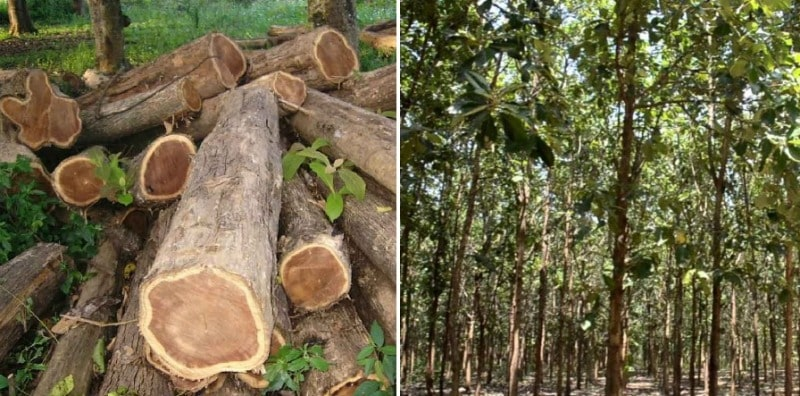Free Courses Sale ends Soon, Get It Now


Free Courses Sale ends Soon, Get It Now



Copyright infringement not intended
Picture Courtesy: https://gkfagroforestry.in/teak-cultivation/
Context: India is one of the largest producers of teak wood in the world, but many teak plantations are underperforming due to a number of factors, including the use of misleading advertisements, a lack of thinning practices, and the absence of comprehensive best practices for cultivation.
Some of the major concerns that are harming India's teak plantations
Recommendations for improvement
Teak Production in India
History of Teak Production in India
Importance of Teak Production in India
|
Current Status ●India was once the world's leading producer of teak, boasting vast natural teak forests across the central and southern regions. Uncontrolled deforestation and increasing demand led to a decline in natural teak reserves. The government imposed bans on clear-felling in the 1980s, promoting plantation-based teak production. ●Today, India is no longer a major teak producer, relying on imports to meet domestic needs. While plantations contribute to some production, they haven't fully bridged the gap. ●Madhya Pradesh, Maharashtra, Karnataka, Kerala, and Tamil Nadu are the leading states in teak production, contributing a significant share to the national output. |
Teak production in India faces several challenges such as:
Way Forward
Conclusion
|
PRACTICE QUESTION Q. In regions with high poverty rates and a dependence on forestry for livelihoods, how can sustainable forestry practices be effectively implemented without jeopardizing immediate economic needs? Can this trade-off be overcome, and if so, what innovative solutions or social programs can be employed? |
© 2024 iasgyan. All right reserved